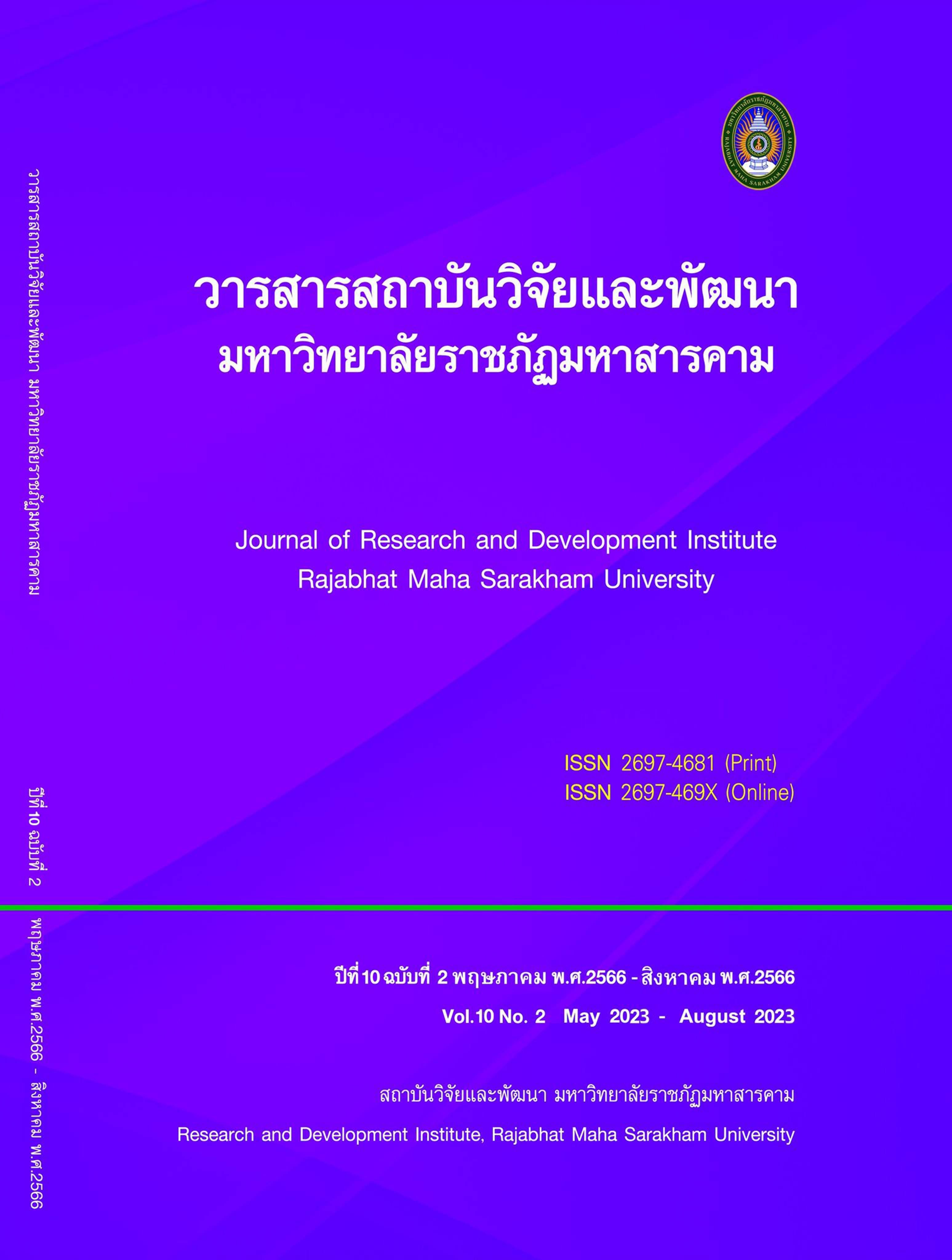Developing the quality of learners according to the policy 4 built by the management process 7 Steps for GC Model under Prachuapkirikhan Primary Education Service Area 1
Keywords:
Quality of learners, 4 policies created, 7 Steps Administrative processAbstract
Management that prioritizes communication and makes it possible for executives to meet with staff members through dialogue, interaction, and observation helps to close the gap between executives and employees. By interacting with employees, learning about the actual issues, fostering positive working relationships between executives and staff, and putting management principles into practice, they can increase the efficiency of their business or their work. Thus, the objectives of this research are 1. To develop the management process of 7 Steps for GC Model 2. To implement learner quality development according to policy 4 Build with the 7 Steps for GC Model management process 3. To study the results of student quality development according to policy 4 built with the 7 Steps for GC Model management process, it is research and development through a collection of qualitative and quantitative data. The development target group was students of all levels of schools under Prachuapkirikhan Primary Education Service Area 1.
The research consisted of 3 phases. Phase 1 was to develop the management process, 7 Steps for GC Model. The data provider was the Director of the Primary Educational Service Area/Deputy Director of the Primary Educational Service Area / Educational Supervisor and the school administrators, 15 people, and 10 qualified experts in focus group discussions. Phase 2 was to develop the quality of learners according to the 4 policies created by the management processes of the 7 Steps for GC Model. The informants were: school administrators and teachers, Phase 3 studied the results of learner quality development according to policy 4 created by the 7 Steps for GC Model management process. The informants were the school administrators and teachers.
The research tools were 1. Management Process Handbook 7 Steps for GC Model 2. Policy Learner Quality Development Manual 4 Create 3. Follow-up Form for Policy Learner Quality Development 4 Create 4. Unstructured Interview Form 5. Synthesis Form best practice Qualitative data analysis by content analysis. Data were analyzed by quantitative statistical analysis by using descriptive statistics, i.e., percentage value. Analysis by means and standard deviation and Analytic Induction group discussion.
The results of the research were as follows: 1. The development of the management process with the 7 Steps for GC Model consists of the 7 steps: Approachability, Team Building, Knowledge, and Responsibility. (Accountability), monitoring (Monitor), exchanging knowledge (Exchange), and building morale. (Encouragement) 2. The results of student quality development according to policy 4 created by the management process of the 7 Steps for GC Model found that there was a consistent level of practice in all aspects of the GC Model overall, the results were better at all levels amounting to 90 percent and up.
In conclusion, with 90% of practices demonstrating improved results at all levels, the 7 Steps for GC Model—which includes approachability, team building, knowledge, accountability, monitoring, knowledge exchange, and encouragement—markedly improved student quality development.
References
Boonchum, A.. (2013). The Development of an Online Learning Exchange Model for Diabetes Prevention and Control Communication for Public Health Academics. Bangkok : Chulalongkorn University.
Buathong, C. (2018). Morale and morale in the performance of civil servants of the Department of Provincial Administration of Phatthalung Province. Bangkok : Southeast Asia University.
Chatyanon, B. (2018). A Study of Desirable Characteristics of Demonstration School Students. Silpakorn University Journal, Year 11, Issue 3, September-December 2018. Pages 284-299.
Garvin, D.A. (1993). Building a Learning Organization. Harward Business Review, July-August : 778-779.
Gordon, R. D. (1985). Empathy : The State of the Art and Science. Paper presented at The International Conference of the World Communication Association. Baguio : Philippines.
Marquardt. (1996). Building the learning organization: A systems approach to quatum improvement and global success. New York.
Phra Khru Prachot Chanthawimon. (2012). Promotion of morality and ethics for students at Nawaminthrachinuthit Horwang School, Nonthaburi, Pakkred District Nonthaburi Province. Bangkok : Mahachulalongkornrajavidyalaya University.
Sherman, M. E. (2001). The Influence of Interdisciplinary Team Teaching on the Work Lives of High School Teachers at an Independent School. Seton Hall.
Thongsawai, M. (2014). Recommend a book. Journal of Education Studies, 41(4), 274–276.
Downloads
Published
How to Cite
Issue
Section
License
Copyright (c) 2023 มังกรแก้ว ดรุณศิลป์, ละมุล รอดขวัญ, พงศ์กฤตย์ นามปพนอังกูร, สุพัชร พันธุระศรี, พรรณี เทพสูตร

This work is licensed under a Creative Commons Attribution-NonCommercial-NoDerivatives 4.0 International License.
Articles that are published are copyrighted by the authors of the articles







